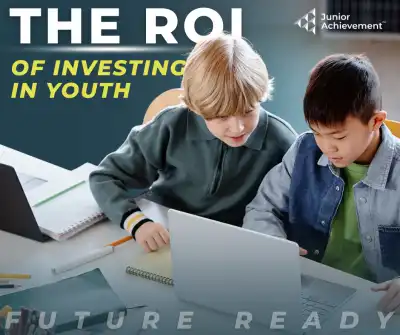The ROI of Investing in Youth: Why Economic Mobility is a Community Imperative
Author: Elizabeth Stepanek
Corporate Responsibility
Published:
Thursday, 13 Nov 2025
Sharing

Image caption: Young Students Learning Together
When we talk about “return on investment,” our minds often jump to balance sheets, bottom lines, and quarterly reports. But what if the greatest ROI isn’t financial in the short term but social, economic, and generational in the long term?
That’s the case when communities invest in young people’s ability to achieve economic mobility.
What Do We Mean by Economic Mobility?
Economic mobility is the ability of an individual to improve their financial situation and quality of life over time and, importantly, across generations. It’s about whether a young person born into challenging circumstances has a fair shot at creating an opportunity-filled future.
Unfortunately, research shows that upward mobility in the U.S. has slowed. Too often, a child’s ZIP code predicts more about their future than their potential does.
Why Communities Should Care
Investing in youth is not just the right thing to do, it’s the smart thing to do. Here’s why:
- Stronger Workforce Pipelines
Equipping young people with financial literacy, entrepreneurial mindsets, and career readiness skills creates a future workforce that is capable, adaptable, and competitive in a rapidly evolving economy. - Reduced Social Costs
When students are empowered with skills and networks, they are less likely to face unemployment or underemployment — reducing reliance on social safety nets and creating stronger tax bases. - Healthier Communities
Economic stability is directly linked to physical and mental well-being. When young people have access to meaningful careers, entire communities thrive. - Generational Change
Every young person who gains confidence, capability, and competence has the power to alter the trajectory of their family and community for decades.
The Role of Hands-On, Real-World Learning
Traditional education is essential, but it’s not enough. Students need experiential learning that connects classroom lessons to real-world opportunities. Programs like Junior Achievement give students the chance to practice financial decision-making, build companies, and engage with mentors who can open doors.
This isn’t charity — it’s strategy. When businesses, educators, and community leaders collaborate, they co-create opportunities that expand access to economic mobility.
ROI in Action!
Communities that invest in youth see returns in the form of:
- Higher graduation rates.
- A stronger local talent pool.
- Increased entrepreneurship and innovation.
- Long-term community resilience.
Math is simple: when we invest in young people, we’re not just changing individual futures we’re strengthening the entire community.
Conclusion
Creating access to opportunity-filled futures is not optional. It’s a community imperative. The ROI of investing in youth is measured not just in dollars, but in the thriving, sustainable communities we build together.
At Junior Achievement, we believe in the boundless potential of young people and in the power of partnership to unlock that potential. The question is not whether we can afford to invest in the next generation. The question is: can we afford not to?
We use cookies to provide you a personalized experience. How we do this is by analyzing user behavior on our site and sharing data with our advertising and analytics partners. You consent to our cookie policy if you continue to use this website.










